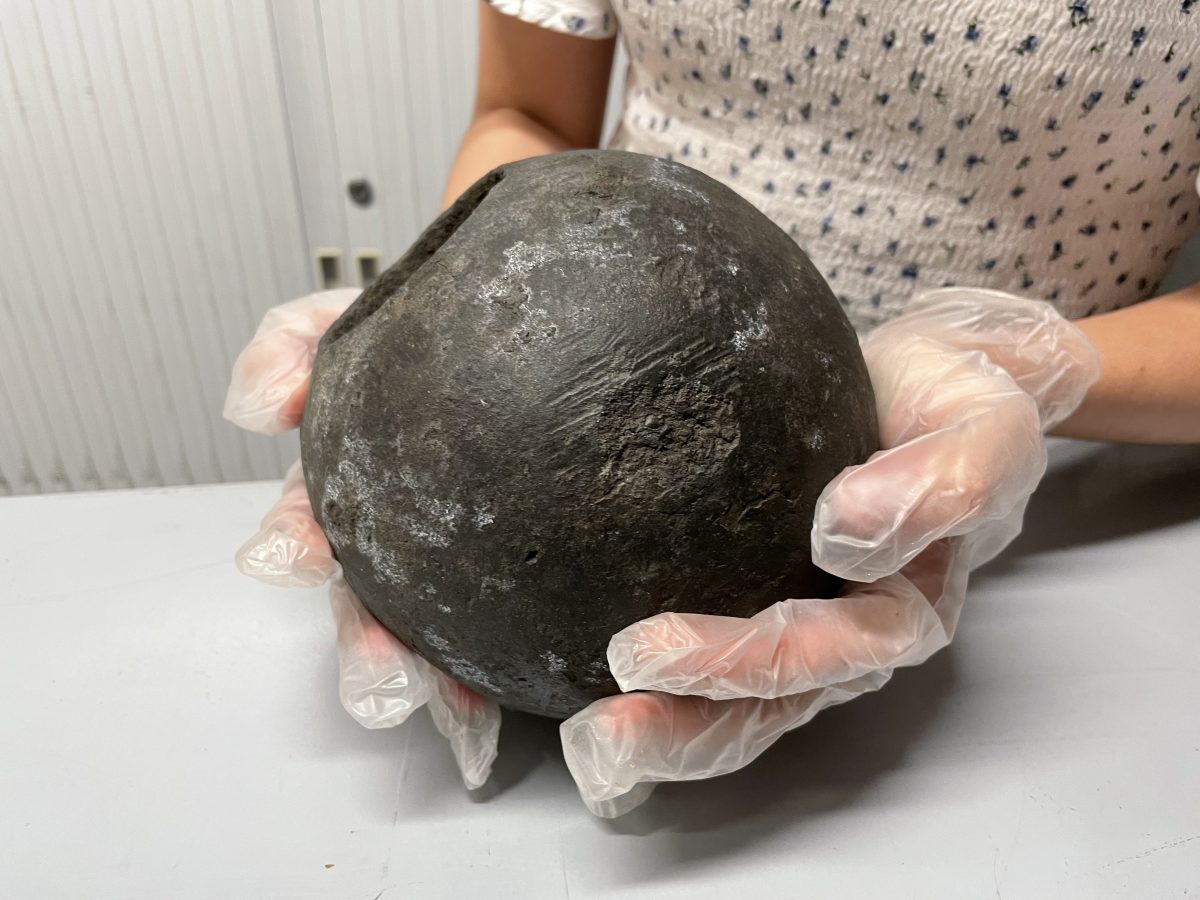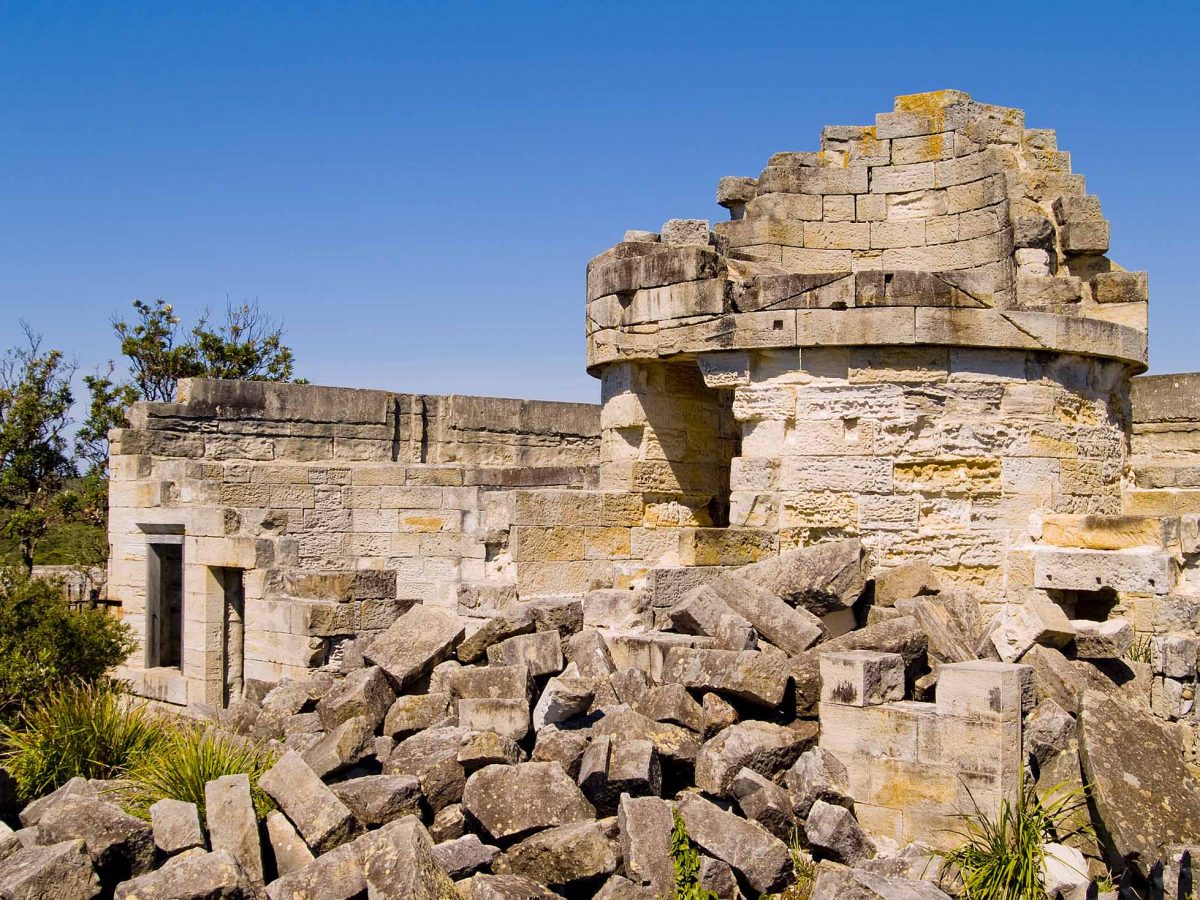
AMSA’s Heritage coordinator Sarah-Jane Lakshman examines the historic cannonball from the maritime agency’s artefacts collection. Photo: AMSA.
What do you do if you’re a lighthouse keeper and you’ve tried everything at your disposal to keep a ship away from the coastline without success?
You fire a cannon, of course.
Such a blast from the past has been uncovered at the Australian Maritime Safety Authority (AMSA) office in Canberra as part of a review of the organisation’s maritime artefacts collection.
The 15-kilogram cast-iron cannonball turned up in the storeroom during an audit of more than 300 artefacts stored at AMSA’s head office in the suburb of Braddon.
A spokesperson for AMSA says the beam from a lighthouse tower was often not enough to warn vessels of nearby dangers, so several along Australia’s coast were equipped with cannons to make a big bang in desperate situations.
“Lightstations were equipped with cannons to alert ships of hazards in desperate situations during bad weather including fog,” the spokesperson said.
“This cannonball was likely stored at one of these light stations for use when other signalling failed.”

A close-up of the cast-iron 15 kg ball. Photo: AMSA.
Cape Borda Lighthouse on Kangaroo Island, built in 1858, is the only one with a working cannon left today. It was originally used during World War I to warn of any Russian ships passing the Island, but only fires for visitors today.
One of the closest lighthouses to Canberra is Cape St George Lighthouse, on the southernmost point of Jervis Bay. When it was built in 1860, it stood 18.5 metres with eight rooms on the ground level.
Only ruins are left today, doubling as an ideal whale-watching lookout, thanks to a string of planning errors that led to it being built about four kilometres north of where it was supposed to be. The end result claimed more lives than it saved. From 1864 to 1893, a total of 23 ships were wrecked on the coast in the vicinity of Jervis Bay.
Then there were tragic stories of the keepers.

All that’s left of Cape St George Lighthouse. Photo: John Eggers, Wikipedia.
Three children died of disease, another fell off the cliff, the father was taken by sharks, and an assistant keeper was kicked in the head by a horse.
But in 1887, Kate Gibson (the principal lightkeeper’s teenage daughter), tripped while playing with a loaded firearm and shot her friend Harriet Parker (the assistant lightkeeper’s daughter) in the head, killing her instantly.
The lighthouse’s lantern was removed in 1904 and the tower was demolished to avoid sea goers confusing it for Point Perpendicular. Anecdotal evidence suggests it was used from 1917 to 1922 for target practice by the Royal Australian Navy.
As for the cannonball in AMSA’s collection, it also sits alongside large lighthouse lenses transported from the UK throughout the 19th century, early 20th-century navigation sextants, 19th-century telescopes and silverware from the Commonwealth Lighthouse Service ships.
Across Australia, AMSA has more than 800 maritime artefacts stored and displayed, many of these priceless items on loan to various museums and local heritage groups.
The major review of AMSA’s artefacts is due to be completed in December this year.
Original Article published by James Coleman on Riotact.








